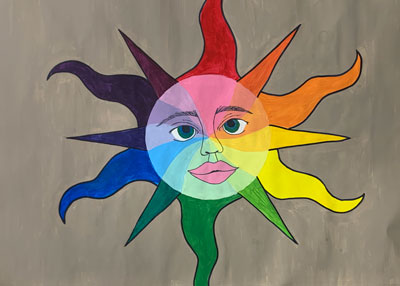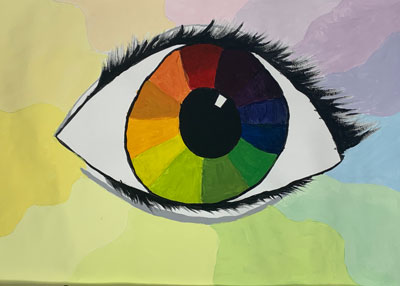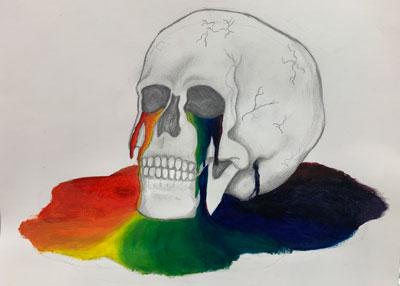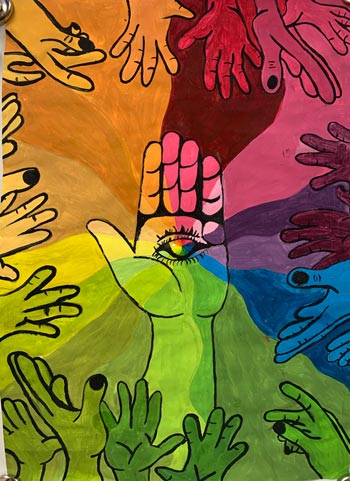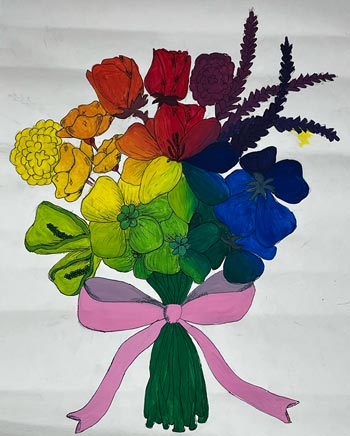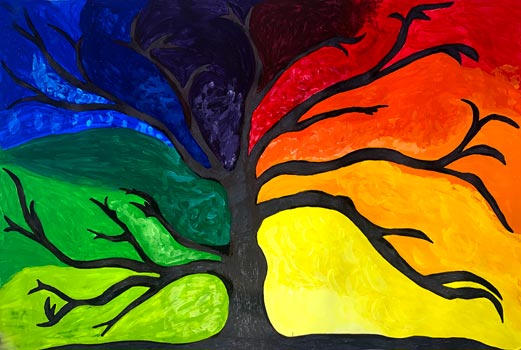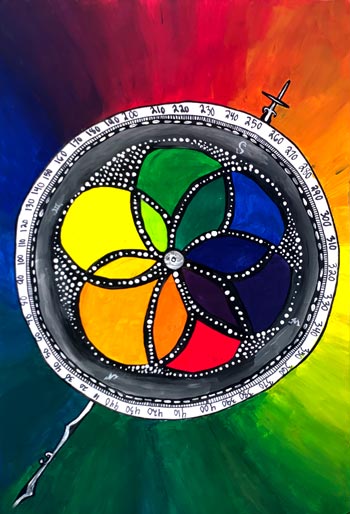Cr.10
aesthetics / problem solving
(color mixing, order of colors - spectrum) |
Work is not complete and/or does not show the process from specified instructions or there is no evidence. |
Student does not understand how to mix colors and to achieve the desired hue;
Colors are not in the order |
Student attempts to mix proper colors, but some colors are off or missing;
Colors are not creating an illusion of a color wheel or spectrum;
Color wheel area is too small;
Too much white space |
All 12 colors are mixed correctly, painted in a proper order.
Student used grey and black paint to support the wheel. |
Artwork is interesting, detailed, shows understanding of proper color mixing,
Greyscale areas support the focal point (color wheel), |
Cr.11
planning / experimentation
(creativity, sketches and idea development, unique solution) |
Work is not complete and/or does not show the process from specified instructions or there is no evidence or is missing |
Solution is not original or very basic,
No evidence of brainstorming or careful planning. |
Some basic sketches were done, but not enough to develop a unique solution |
Comprehensive research and sketches were done
Sketches (multiple thumbnails) for a unique solution.
Artwork is creative and original.
|
Careful planning, numerous sketches (multiple thumbnails) for a unique solution.
The solution is interesting, unique and detailed. |
Cr.12
skills
(painting technique, craftsmanship)) |
Work is not complete and/or does not show the process from specified instructions or there is no evidence or is missing |
Painting is sloppy, not carefully placed within the outlines,
Some areas are not painted |
Painting technique needs improvement..
|
Painting technique is good, paint stays within the lines, small brush strokes, paint is not watered down or bulky
Craftsmanship is good |
Beautiful craftsmanship;
Painting is flawless
Attention to details
|

